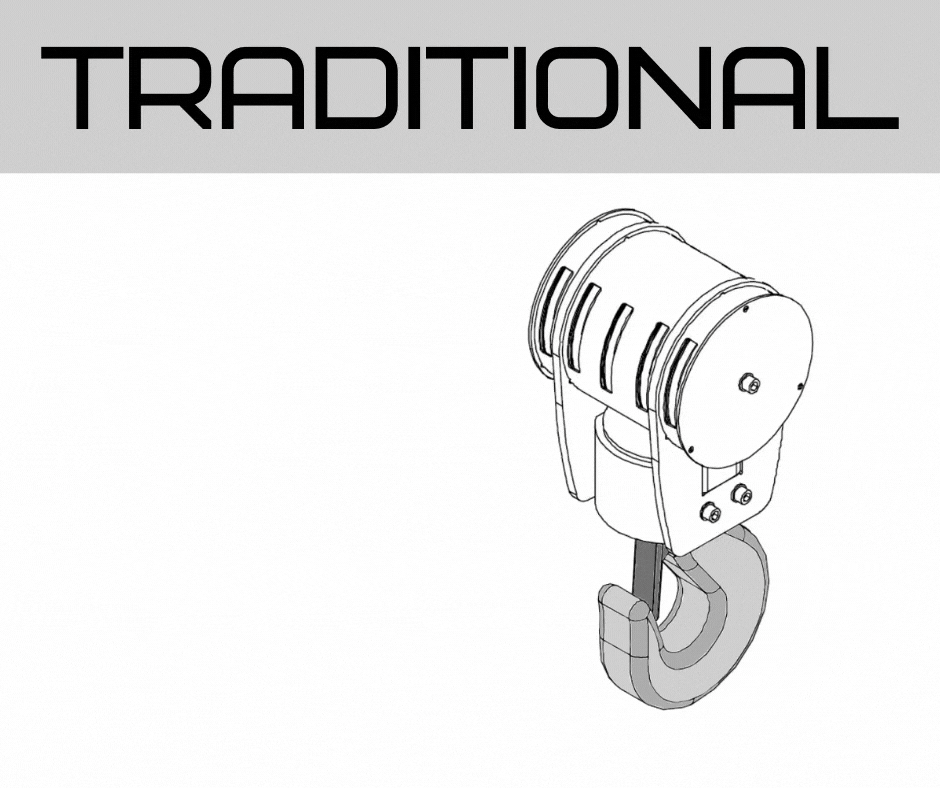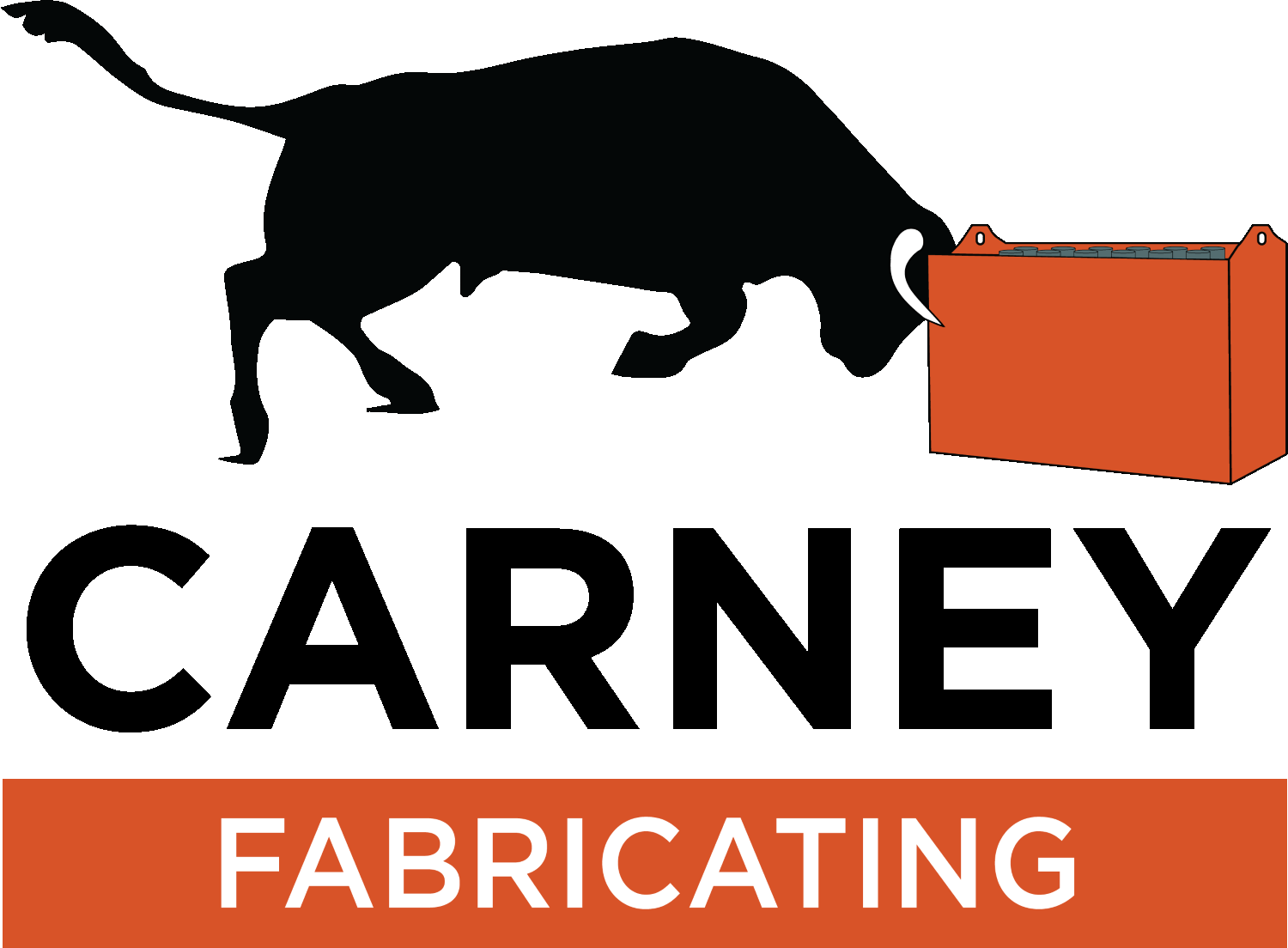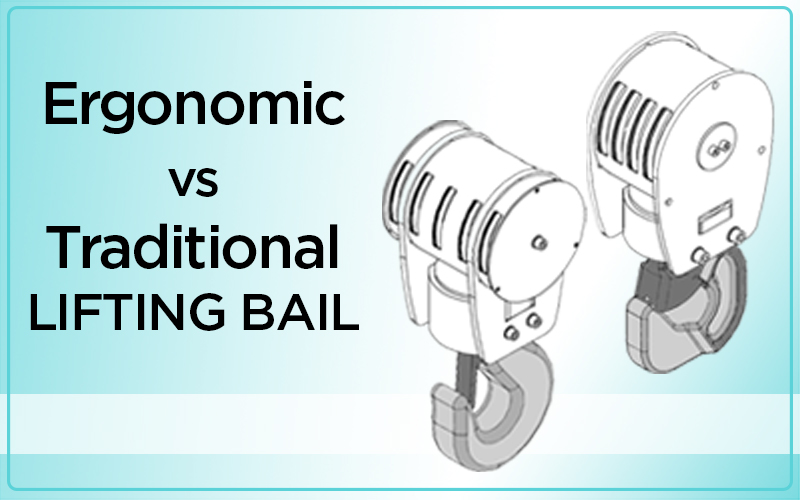Carney Fabricating understands the importance of ensuring your below-the-hook lifting devices are engineered and manufactured to enhance the over all performance of your overhead cranes and hoists.
One way to ensure that we meet customer needs is to match the lifting bail to your crane hook dimensions. Some hoist brands use the “square shaped” crane hook. Brands like Konecranes, R&M Materials Handling, SWF Krantechnik and Verlinde. Many customers who are crane owners have these types of crane hooks don’t realize the value in the “right bail shape for the right crane hook,” approach. At Carney a properly designed lifting bail on a below-the-hook lifting devices ensures that your crane hook will perform well without getting damaged from peening and small cracks in the hook material.
As a standard offering Carney has modeled and designed the lifting bails separately to allow any bail type to be added to as standard design below-the-hook lifting device product. Products like lifting beams, short span lifting beams, pallet lifters, sheet lifters, sack lifting beams (FIBC – Flexible Intermediate Bulk Container bags example: super sack), roll lifting beams, C-hooks and coil lifters (make each product hyperlink to that page).
Matching lifting bail to crane hook value-added will:
- Preventative Maintenance – avoid potential damage or cracks
- Reduce crane down-time
- Reduce extra rigging reduces extra costs
- Maximizes lifting heights and helps with low-headroom lifting applications
 At Carney Fabricating, we have innovated an Ergonomic Lifting Bail to meet the unique demands of your crane hook.
At Carney Fabricating, we have innovated an Ergonomic Lifting Bail to meet the unique demands of your crane hook.
For more information, get in touch with our team info@carneyfabricating.com
The History of the “Ergonomic” (square) Shaped Crane Hook
In 1999 Konecranes, one of the largest manufacturers of various overhead cranes, invented the concept of the square shaped crane hook when they introduced and marketed as an ergonomic crane hook.
The hook shaped provided reduced weight, added strength and operator ergonomics. However, the shape created challenges for below-the-hook lifting device and sling manufacturers to provide products that would not damage the crane hook. Many crane owners over the years for example would use these square crane hooks with round master links or attach oval lifting beams on these type of hooks. As a result overtime customers that owned and operated these cranes with these hook styles would damage the crane hook by creating peening marks on the sides of the hook, that eventually would increase the likelihood of developing small cracks in the crane hook that would lead to the crane owner having to replace the crane hook. Crane hooks are one of the most costly components to replace on an overhead crane.
Today the square shaped crane hook is widely distributed with various wire rope hoist brands such as Konecranes, R&M Materials Handling, SWF Krantechnik and Verlinde.
Additional Challenges
Other challenges of the square hook design would prevent or inhibit a crane operator from directly connecting the square crane hook directly to the load being lifted.
Therefore additional rigging products such as a master link with a sling hook were introduced to allow for a direct connection to a round opening, round lifting bail, eye-bolt or round lifting pin.
By introducing extra rigging components as seen in the image this takes away from the overall available lifting height which can impact a crane or hoist in a low headroom environment the inability to lift tall loads. Crane hook manufacturers sometime forget this and the design of a low headroom wire rope hoist purpose is defeated when extra rigging components are introduced.
Round master links on square hooks peens the hooks sides and cause cracks to form (shown by red arrows).
The force of the load is being applied to two small areas of the master link round edges. This is also NOT ideal for the master link since the weakest area of the master link is usually the shoulder.
Therefore properly engineered lifting points for a square crane hook to connect to is the ideal solution to eliminate extra rigging, prevent hook cracks and maximize lifting height.



